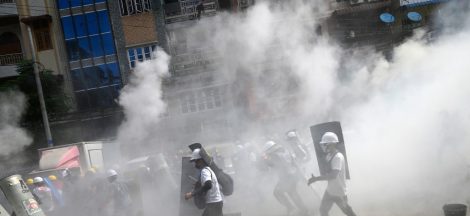Supreme Energy, PLN in talks to expand geothermal power plant in W. Sumatra. Renewable energy company Supreme Energy plans to expand the generation capacity of its geothermal power plant in Muara Laboh, West Sumatra, which recently entered commercial operations.

The company is in talks with state-owned electricity company PLN and the Energy and Mineral Resources Ministry on the development of the second stage of the power plant, which would up the generation capacity by 65 megawatts, Supreme Energy vice president of relations Prijandaru Effendi said.
“The expansion would require $400 million in investments and would start once PPA negotiations are settled,” he said following the inauguration of the first stage of the power plant on Dec. 16.
The electricity from the first unit of the geothermal plant, which has a capacity to produce 85 MW, will be fed into PLN’s power distribution network in Sumatra. The new power plant is expected to supply electricity for 340,000 households.
Supreme Energy
PLN signed a 30-year power purchase agreement (PPA) for the current 85 MW supply of power. Prevailing regulations cap the price at 6.32 US cents per kilowatt hour (kWh).
Once Muara Laboh operates at 150 MW, West Sumatra will become the country’s fourth-largest geothermal power producer, exceeding North Sulawesi, which hosts the 120-MW Lahendong plant.
With 1,035 MW of geothermal reserves, West Sumatra holds Indonesia’s fourth-largest geothermal potential after West Java, North Sumatra and Lampung, according to the General National Energy Planning (RUEN) roadmap.
Supreme Energy
However, many renewable energy companies struggle to achieve financial closing, despite having a PPA, due to bankability problems, says a recent Institute for Essential Services Reform (IESR) report.
The report identifies ministerial regulations No. 10/2017 and No. 50/2017 as disincentives to investment. For instance, the latter regulation requires investors to transfer their renewable energy projects to PLN after their PPAs expire, which makes banks reluctant to accept projects as collateral for loans.
“Several IPPs managed to secure financing and reach financial closing due to their strong project sponsors. For small IPPs, however, it is more difficult to get funding, as they usually do not have creditworthy sponsors,” wrote the IESR in its 2020 Clean Energy Outlook.
PLN will feed most of the geothermal plant’s power into its 275-kilovolt (kV) Trans-Sumatra electric network, aside from channeling some power to the Muara Laboh region.
“[The Muara Laboh plant] will strengthen Sumatra’s electric grid, so that it could accommodate future growth and facilitate investment in Sumatra,” said PLN spokesman Dwi Suryo Abdullah to The Jakarta Post.
West Sumatra’s economy grew 5.16 percent year-on-year (yoy) in the third quarter, marginally higher than Indonesia’s 5.02 percent yoy, mainly driven by greater palm oil sales to both foreign and domestic markets, Bank Indonesia (BI) data show.
Due to the palm oil industry, third-quarter industrial electricity consumption grew 8.6 percent yoy in the third quarter, while household consumption grew by a smaller 2.6 percent yoy.
“This indicates that business players are increasing production in anticipating a jump in palm oil supply that needs to be processed,” wrote BI in its quarterly regional economic report.
“West Sumatra shouldn’t face problems absorbing the plant’s power,” noted the energy ministry’s geothermal director, Ida Nuryanti Finahari, adding that Muara Laboh plant’s total capacity was planned to go up to 220 MW.
geothermal power plant
According to the energy ministry, the total installed production capacity for West Sumatra in 2018 was 791.32 MW, primarily from coal-fired power plants (54.7 percent) and hydropower plants (32 percent).
Ministry data also show that renewable energy plants contributed 35.8 percent to the province’s total power production capacity last year, higher than renewables contribution to the country’s production capacity (15.06 percent) in the same period.
geothermal power plant
The government says renewable energy is high on its agenda, but a report by the Agency for the Assessment and Application of Technology (BPPT) has concluded that Indonesia will reach a new and renewable energy share of just 13 percent of the energy mix by 2025, much lower than the 23 percent targeted in the RUEN road map. Supreme Energy, PLN in talks to expand geothermal power plant in W. Sumatra (Norman Harsono, The Jakarta Post)





 Bahan Berbasis Bio untuk Energi, Potensi Indonesia Lebih Besar dari Eropa
Bahan Berbasis Bio untuk Energi, Potensi Indonesia Lebih Besar dari Eropa 